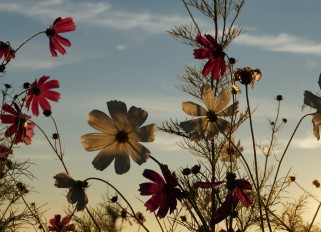Garden Tips in the Fall

Collect seeds from heirloom flowers and vegetables for next year. Once heads are crispy brown, cut them off, open up the pods, and spread the seeds on a paper towel to dry for 2 weeks. Place the dried seeds in an airtight container or zippered bag and store in a cool, dark and dry place.
Before putting your garden to bed, give it a bedtime snack. Mix generous layers of peat moss, compost, manure, and fallen leaves into the soil. The additional nutrients and microorganisms will boost the health of the soil and get it ready for next season.
Don’t chop down perennials at the end of the growing season. Dried flower heads are a great resource for hungry birds and provide winter interest. The upright stems create a natural trap for leaves and snow without compacting and smothering the base- and they protect the plant from freezing and thawing.
The best time to plant spring-blooming bulbs is September-October, when soil temperatures have cooled. Place bulbs in well-drained soil. They typically require at least 6 hours of direct sunlight each day. Dig a hole two to three times deeper than the bulb is tall, and then place the bulb in the hole, pointy side up.
If you have a squirrel problem, plant allium, daffodil (6-to 8-in) and hyacinth (6-in). Plant paper-white narcissus in November for holiday blooms. Place bulbs tightly, points up, in a container with potting soil. Cover bulbs leaving top third exposed. Set in a sunny location and water weekly.
